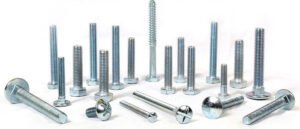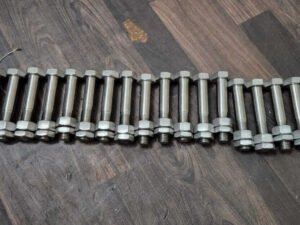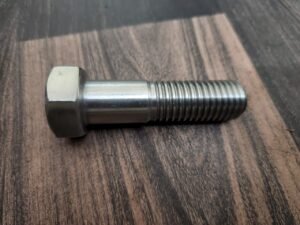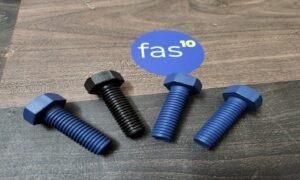To identify and verify PED (Pressure Equipment Directive) certification for fasteners, you can follow these steps:
- Understand the Pressure Equipment Directive (PED): The PED is a European directive that sets essential safety requirements for pressure equipment. It applies to various types of pressure equipment, including fasteners used in pressurized systems.
- Check manufacturer documentation: Request documentation from the fastener manufacturer or supplier. Look for certificates, test reports, and other relevant documents indicating PED compliance. The manufacturer should provide information about the conformity assessment procedures followed and the applicable standards.
- Verify CE marking: The PED requires fasteners to bear the CE marking, which indicates compliance with European directives. The CE marking should be accompanied by a four-digit identification number of the notified body responsible for the conformity assessment. This number is assigned to the manufacturer after successful evaluation by a notified body.
- Confirm notified body status: Each notified body responsible for PED certification has a unique identification number. You can verify the validity and accreditation status of the notified body by checking the official list of notified bodies published by the European Commission. Ensure that the notified body responsible for the certification is listed and authorized to issue PED certificates.
- Review test reports and technical documentation: The manufacturer should provide test reports and technical documentation demonstrating that the fasteners meet the essential safety requirements of the PED. The documentation may include material specifications, mechanical properties, chemical compositions, and other relevant information.
- Engage a third-party inspection body (if necessary): If you have doubts or want an additional layer of verification, you can engage a third-party inspection body. These organizations can assess the fasteners independently and provide a certification or inspection report validating PED compliance.
- Consult with experts: If you are unsure about the certification process or have specific questions regarding PED compliance for fasteners, consulting with experts in the field, such as engineers, quality assurance professionals, or regulatory compliance specialists, can provide valuable guidance and insights.
Remember, the PED primarily applies to pressure equipment, and PED Approved Fasteners used in such equipment need to meet the relevant requirements. Following these steps should help you identify and verify PED certification for fasteners effectively.
PED Approved Fasteners Certified:
| Temperature ranges from DIN EN 10269 | Material | Hardness HV of bolt and/or nut | ||||||
| min. | Shortterm servicea max. | Longterm serviceb max | symbol | number | name | condition c | min. | max. |
| -120 °C | - | - | KB | 1.5680 | X12Ni5 | + NT | 157 | 203 |
| + QT | 173 | 235 | ||||||
| - | 400 °C | 500 °C | Yd | 1.1181 | C35E | + N | 150 | 200 |
| - | 400 °C | 500 °C | YK | 1.1181 | C35E | + QT | 165 | 210 |
| - | 400 °C | - | YB | 1.5511 | 35B2 g | + QT | 165 | 210 |
| -60 °C | 500 °C | 550 °C | KG | 1.7218 | 25CrMo4 | + QT | 195 | 240 |
| -100 °C | 500 °C | - | GC | 1.7225 | 42CrMo4 | + QT | 275 | 337 |
| - | 500 °C | 550 °C | GA | 1.7709 | 21CrMoV5-7 | + QT | 225 | 272 |
| - | 600 °C | 550 °C | GB | 1.7711 | 40CrMoV4 6 | + QT | 272 | 320 |
| - | 550 °C | 600 °C | V e | 1.4923 | X22CrMoV12-1 | + QT 1 e | 256 | 303 |
| - | 550 °C | 600 °C | VHf | 1.4923 | X22CrMoV12-1 | + QT2 f | 287 | 367 |
| - | 600 °C | 600 °C | VW | 1.4913 | X19CrMoNbVN11-1 | + QT | 287 | 367 |
| - | 650 °C | 670 °C | S | 1.4986 | X7CrNiMoBNb16-16 | + WW + P | 210 | 272 |
| -196 °C | 650 °C | 650 °C | SD | 1.4980 | X6NiCrTiMoVB25-15-2 | + AT + P | 287 | 367 |
| -196 °C | 650 °C | 800 °C | SB | 2.4952 | NiCr20TiAl | + AT + P | 320 | 417 |







